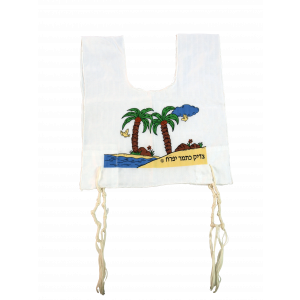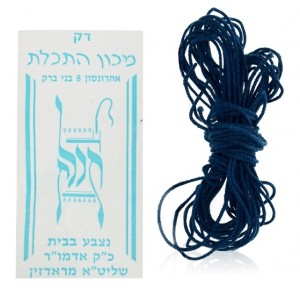Tzitzit Guide
One of the commandments upon men is the wearing of Tzitzit on each of the edges of a four cornered garment. In the fact, the wearing of Tzitzit is one of the first commandments a boy performs in his lifetime with many children as young as three wearing Tzitzit. The commandment of wearing Tzitzit appears in the Books of Numbers and Deuteronomy.
What are Tzitzit?
Tzitzit are the sets of fringed strings that are attached to a poncho-like garment typically made of either cotton or wool also known as Tzitzit. As such, the term Tzitzit is often used it to refer to both the garment and the strings. However, Tzitzit strings are also tied to the corners of a Tallit and the two have the same rules governing their use in Jewish Law.
Decorations
The vast majority of Tzitzit sets are undecorated, with the most elaborate sets having a few black stripes along the bottom front edge in imitation of a Tallit. However, children’s Tzitzit sets are decorated, although the designs are usually something Judaica related like a child saying the Shema prayer or objects such as cars, planes and building blocks. The strings that are tied to a Tzitzit garment are never decorated. It should be noted that the strings used with a Tzitzit garment are usually wool and because of a biblical prohibition may never be worn with a garment that is made from linen.
Strings
Tzitzit strings are the most complicated areas of Tzitzit sets. Typically, each set of Tzitzit strings includes four long strings and nine short strings, all of which are white. There are several different methods of tying Tzitzit strings, all of which are based on the interpretation of traditional Jewish texts. The most common two methods are Rashi and Rabbeinu Tam, two Rabbis from the 10th and 12th centuries. Those two styles, while they have slight differences, typically have strings in groups of 7, 8, 11 and 13 in between double knots. Other styles include Radzyner, Arizal, Rambam and Gr”a; these tying methods tend to differ heavily from the other two methods.
On alternative regarding Tzitzit strings is to include the blue string called Techelet on each corner. These Tzitzit strings may be tied in several different manners, again in conjunction with legal rulings and consequently the number of blue strings varies. Tzitzit with the Techelet string have resurged in popularity over the last few years and are worn by most orthodox Jews.
For More Information
For more information on
Tzitzit,
Judaica, or
synagogue items, feel free to
contact our Judaica experts with any questions or concerns.





















